Our story
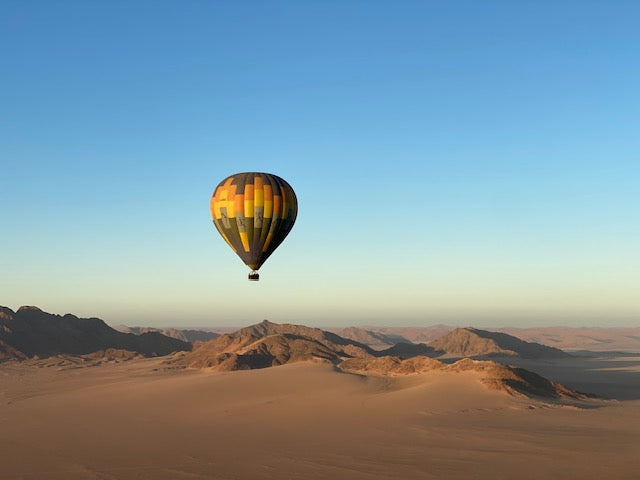
We have always wanted to contribute our grain of sand to achieve a sustainable world. In 2019, when my sister was studying in the UK, she presented a project for launching backpacks made from recycled plastics. The project received the award for the best business project at the school, given by a demanding jury made up of successful global entrepreneurs.
We tried to carry out the project with national production, but after speaking with several companies, we had to abandon it. It wasn’t our time.
Last year, after a trip to Namibia with our parents, we decided to revisit our idea of selling sustainable products made from recycled materials, particularly incorporating recycled plastics (RPET).
Photograph: Taken from a hot air balloon in Gibeon, in the Hardap region of Namibia, where you can see some of the highest and oldest dunes in the world.
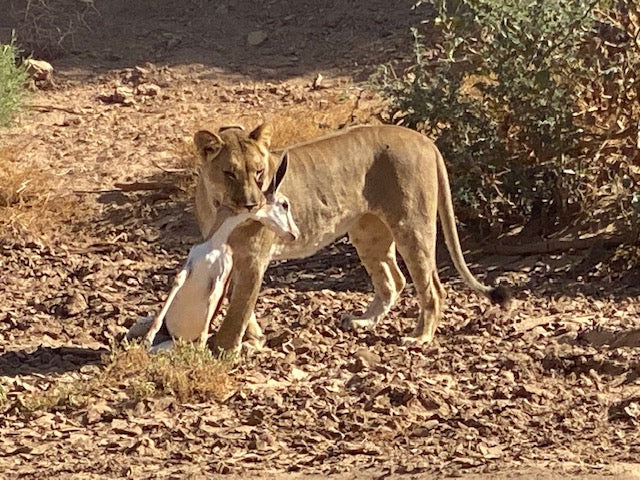
What happened during that wonderful trip? We visited the Skeleton Coast, where the world’s oldest desert, the Namib, meets the Atlantic Ocean. The Skeleton Coast National Park stretches about 500 kilometers, where the Benguela Current drives the waves to the base of the dunes. Over the past five centuries, it is estimated that more than a thousand ships have wrecked in this area.
Photograph: A lioness capturing her prey, taken during Verónica and Alfredo’s trip to Namibia.
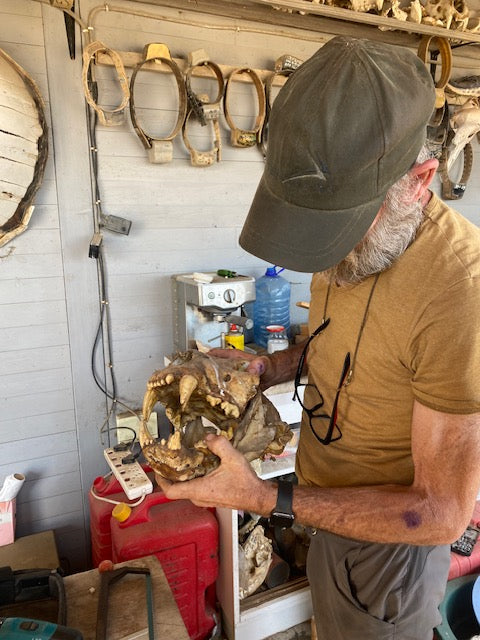
There, we met Philip Stander, the founder of the Desert Lion Conservation project.
In this project, Philip followed the life of a pride in the Namibian Desert in northern Namibia. This pride included three of the five brothers known as “The Five Musketeers,” who were featured in the documentary “Vanishing Kings: Lions of Namibia”, released in 2016 by National Geographic Channel. The documentary spoke about the poisoning of three of these lions by local farmers as retaliation for the lions killing some of their livestock.
Photograph: Philip Stander showing us the teeth of lions that died in the Namibian Desert.
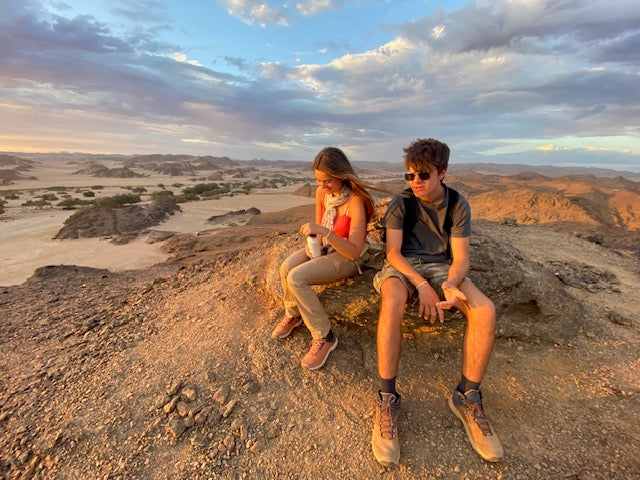
In the early 1990s, all lions living along the Skeleton Coast had been wiped out. However, in 1997, a group of these animals from the desert settled there, and in 2002, the population began to grow.
Photograph: The two siblings resting in the Namibian Desert.
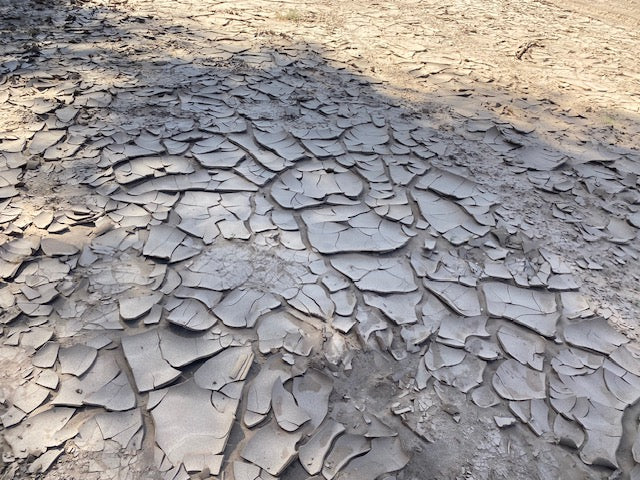
Occasionally, some lions were observed scavenging on dead seals and seabirds. This was occasional behavior, where the lions took advantage of dead animals they found. However, the situation has changed in recent years (especially after the severe drought of 2016), and it has been observed that these lions have begun to hunt seals, flamingos, cormorants, and other marine creatures intentionally that approach the coast.
As recorded in various studies published in the Namibian Journal of Environment, this is a fascinating example of adaptation, where lions have learned to take advantage of the rich food source provided by the coastal ecosystem.
Photograph: Photos taken by us on the Skeleton Coast, where the drought in many parts of Namibia can be seen, forcing the lions to seek food on the coast.
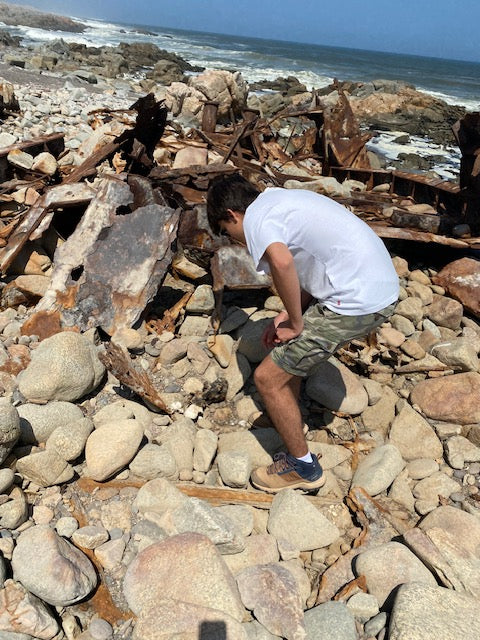
But while the lions are finding a rich food source, Stander also pointed out a growing risk, which he personally told us about. This risk stems from the contamination that marine animals face by ingesting more and more plastics they encounter on the coast. This pollution not only harms marine animals but also exposes these desert lions, which are already endangered.
Photograph: Alfredo, co-founder of Inner Green Legacy, searching for plastics among the wrecked ships on the Skeleton Coast.
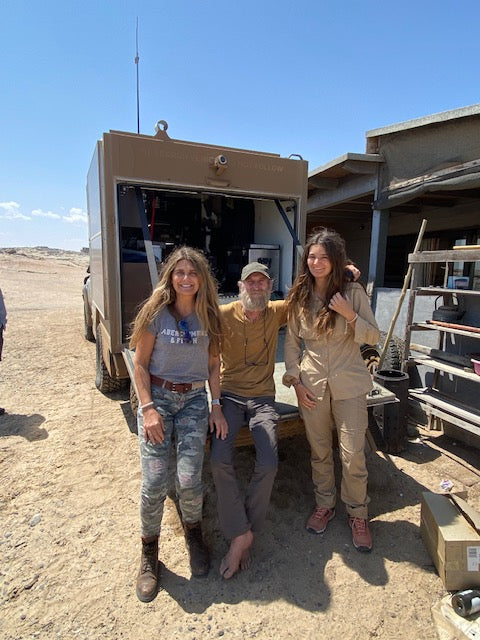
This is why, after returning from Namibia, we started developing the idea for Inner Green Legacy, which we are now carrying out. A dream come true.
Photograph: Verónica, co-founder of Inner Green Legacy, with her mother and Philip Stander at the observation station on the Skeleton Coast
